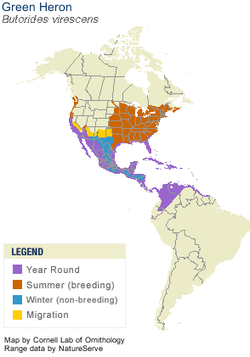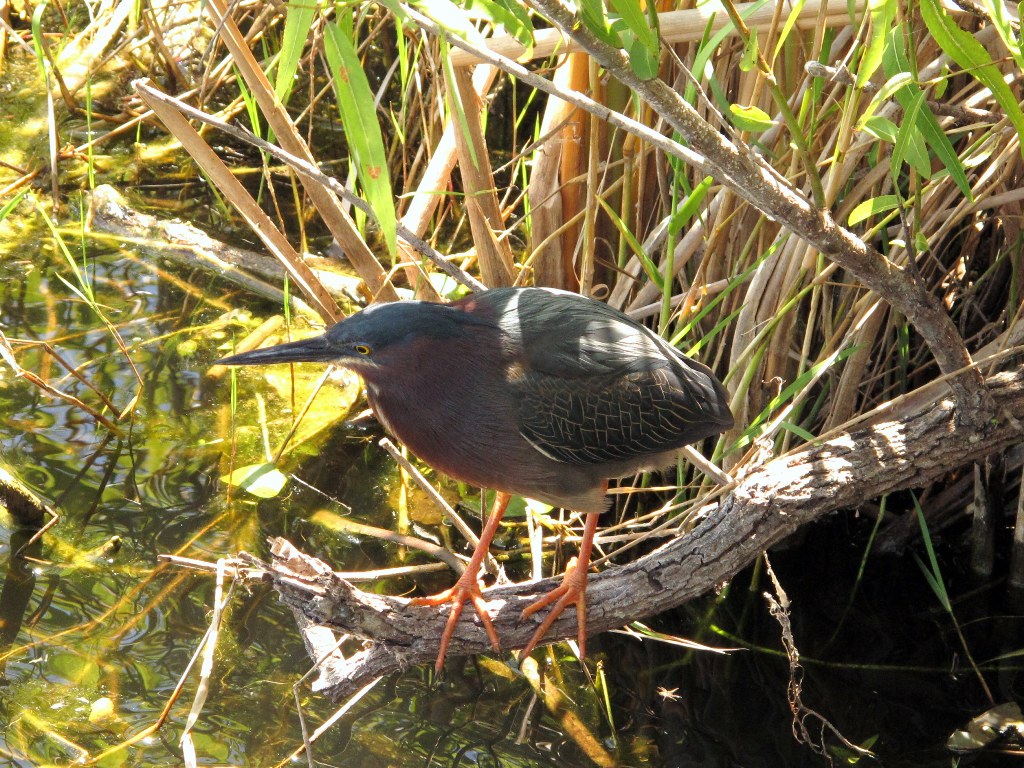 This is a Green Heron, a small, "cryptic" member of the heron family (scientific name: Butorides virescens). When we say an animal is "cryptic" it means it is well-camouflaged and relies on "not being seen" as a partial or whole defense against predators; but also often that it is shy and will use this ability to avoid contact with humans or other animals. Green Herons stand motionless at the water's edge, often on a branch or the shore, waiting to strike at fish with their sharp bill. They have been shown to use tools, luring fish using twigs, feathers or insects as "bait". Unlike many of the larger herons who are often seen wading out in the middle of a pond, Green Herons prefer to stay out of the water or keep to the shallows, because they have considerably shorter legs than most of their relatives. They primarily eat fish but are also willing to snack on insects, spiders, snails, crustaceans, amphibians, reptiles and rodents. You don't have to live in South Florida to see a Green Heron, but it helps, as they make their homes here year round (check out their habitat map to the left). If you live anywhere in the Eastern half of the United States, you might see one at your local pond in the summer--if you look carefully. While Green Herons can still be seen throughout the United States, their populations are declining gradually, by 1.6 percent per year (1966-2010). That may not seem like much, but it means that the population has fallen 53 percent since 1966. The loss of suitable habitat, especially wetland, is probably the biggest single threat to this population. The good news is, at least for now, bird experts consider Green Heron populations healthy, and in California they have seen population increases in recent years. If you'd like to learn more about Green Herons or other birds, we'd suggest you check out the awesome Cornell Lab of Ornithology website: www.allaboutbirds.org. They are also a great resource for doing science in your own backyard through projects like The Great Backyard Bird Count or Project Feederwatch.
0 Comments
Leave a Reply. |
Field Notes
Archives
July 2021
Categories |
|
Partner with us! We are always looking for new schools, scientists, and non-profit organizations to partner with. Please contact us here to start a conversation.
Hear from us! Sign up for our newsletter to hear about what is happening at Field School as well as upcoming offers and specials. |


 RSS Feed
RSS Feed